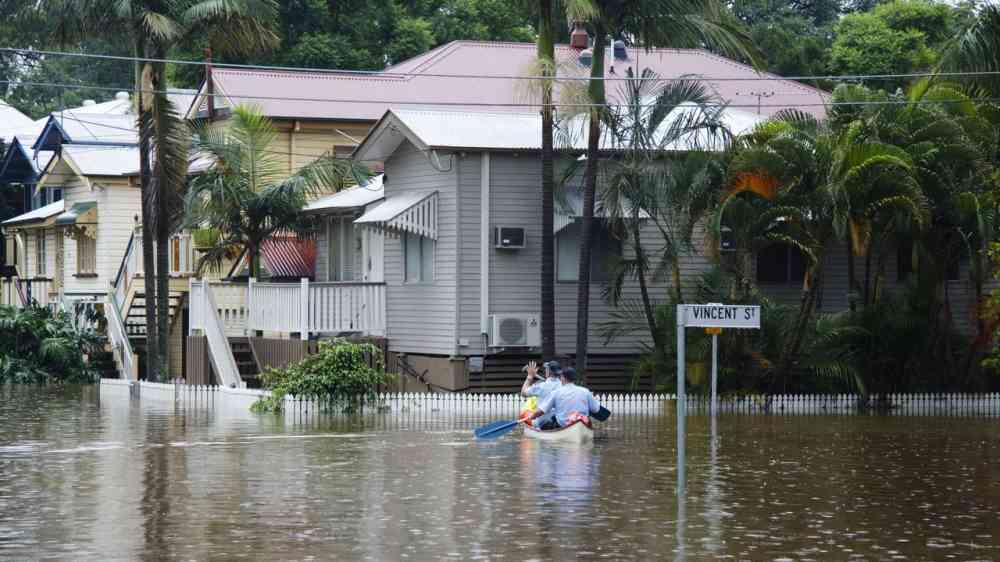Planning for future disasters: Frontline communities key to building resilience

Australia is readying itself for a scorcher of a summer – expected to be hit by bushfires, floods, heatwaves, and drought. Disaster mitigation and preparation, and response and recovery were once distinctly separate phases. We’re now staring down the barrel of a season beset by ‘multi-crises’ – a multitude of disasters that hit communities in rapid succession or even all at once.
Many of the same communities which are still recovering from being underwater in 2022 are already back at the coal face, preparing for the impending dangers of an earlier-than-expected start to the bushfire season.
These are the very communities who were largely left to their own devices to deal with floods and fire: surviving and rebuilding through their remarkable resilience and quick thinking in the face of great adversity. In the wake of a potentially catastrophic summer, we must urgently tap into this extraordinary community spirit and combine it with our formalised responses to disasters.
Our recent research under the NSW Government’s Disaster Risk Reduction Fund involved dozens of interviews and community discussions across disaster-affected regions in the Blue Mountains, Hawkesbury and Northern Rivers, areas which suffered greatly through the 2019-20 bushfires and floods of 2020-22.
While waiting for government assistance during and immediately after these disasters, communities banded together to save lives, offer shelter, provide essential supplies, and disseminate vital information. Rapid community-driven actions highlighted the power of local knowledge and social connections.
When we sat down and listened to people’s experiences, it became clear that community-led disaster responses are more than just a “feel good” news story – they are crucial to emergency responses and often vital for survival. One person told us that when bridges were cut off by floods in their Local Government Area (LGA) and landslides prevented supplies from being transported from another direction, locals and “mum” networks set up informal supply centres, banding together and coordinating the distribution of essential supplies like food and medication to isolated individuals and families. Many of them were society’s most vulnerable: pregnant women, single parents, people with disabilities, the elderly and those living in poverty.
Despite this remarkable, life-saving effort, many of the people we spoke to felt ignored by the formal emergency response, and that their experience and knowledge weren’t fully recognised as legitimate expertise:
"This sense of not being viewed as a legitimate in what we were doing, even though we'd been consistently there from day dot, and doing it well with very little [Participant NRP16]."
Spontaneous community-driven efforts are also sometimes treated by outsiders as disorganised chaos rather than recognised for its strengths in agility and nimbleness:
"And I addressed them and stopped one of them and asked them to listen to what we'd been doing and what was really needed and they didn't want to listen, didn't respond [Participant NRP11]."
So how do we plan for future disasters, and best utilise both these self-organising community responses, as well as the formal, government led responses?
How we move forward is not by formalising spontaneity or imposing external structures on decentralised approaches. What these communities need is;
- Better investment in physical infrastructure – like roads, telecommunication coverage, and alternatives like UHF radio
- Increased funding for community venues and events, including practice evacuations and disaster planning, all so that when disaster strikes, communities can easily mobilise.
- Local knowledge must be recognised as legitimate knowledge – not just in immediate disaster response but also be on the drawing board of formal, long-term preparedness and planning.
- Competition for short-term, community grants reduced, something critical in remote and isolated communities that don’t necessarily have robust networks around schools, sports clubs, churches or other centres that usually draw people together.
The knowledge and social connectedness of local communities will be the sources of the nation’s resilience against increasingly severe bushfires and floods – a resilience rooted in their bonds and understanding of their environments. Locals simply “get” their own community: they know the lay of the land, the shifting patterns of fire and water, and who among them need the most help. We must support them so they can support each other.